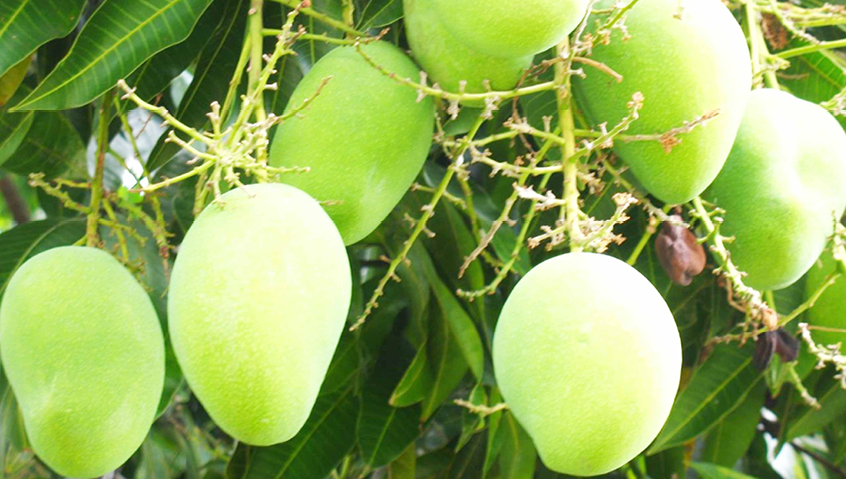What you need to know:
Mango trees require a good supply of nutrients during the active growth stage until after about four years when they start fruit production.
The phenomenon of good harvest in one season and a drop in the next one is referred to as biannual or alternate bearing/fruiting.
It is influenced by many factors including environmental (humidity, water, temperature and diseases), genetic and cultural (soil fertility). The problem can be managed by avoiding cultivars which are known alternate bearers or managing the environment and optimising cultural practices like:
Pruning
In mango growing, the most critical pruning is the frame formation or formative pruning to produce a spreading framework or canopy which forms the fruit bearing surface (dense canopy).
Yam farmers lament government negligence
Why I invest in organic fertiliser production – Young entrepreneur
In the first year, when the trees have grown to more than one metre above the ground, trim at 0.90-1.0m from ground to encourage side branches. In year two, leave four to five well-spread branches to be future scaffolds on which the bearing surface will develop. Any laterals below this head or graft union should be pruned off. Further pruning is not required other than normal removal of dead, diseased, broken wood or parasitic plants. Mango requires dense foliage, which is important in fruit development.
Fertilising
The nutrient requirements of mango trees are dependent on the stage of growth. Fertilisers are recommended after the establishment of a root system (about three to six months after planting). Mango trees require a good supply of nutrients during the active growth stage until after about four years when they start fruit production and, thereafter, more nutrients are required, especially during flowering and fruit formation.
Excess nitrogen fertilisation in initial stages injures mango roots.
The following general nutrient supply guidelines are suggested but a soil, tissue analysis report or both should be the best indicators for mineral element supplementation.
Nitrogen (N):
- Year 1: 50 to 100g Calcium Ammonium Nitrate (CAN) per tree per year.
- Year 2: 200 to 200g CAN per tree, per year.
- Year 3: 150 to 300g CAN per tree, per year.
In subsequent years, apply 200 to 400g CAN per tree, per year depending on the crop potential. Apply rates in two to four splits to avoid losses due to leaching or scorching of roots.
Compost
During the early development of the mango tree (in the first four years), a regular supply of compost and green manure can be provided to improve the foliar development.
During flowering, application of organic fertilisers (compost made of farmyard manure or other organic material) should be applied so that enough nutrients are available for fruit formation and fruit development.
Some 10 kilogrammes of farmyard manure per tree, per year is beneficial.
In mature orchards (established fruiting trees), water is normally withheld from the end of the wet season until flowering. This period of low soil moisture is believed to encourage earlier and more synchronous flowering.
Watering mature trees
Irrigation is highly recommended from flowering until late fruit maturity. Some growers prefer to start irrigating after 50 percent of the tree is in flower and at least 50 percent of the flowers are open.
Other growers will start irrigating from the commencement of visible flower panicle development in an attempt to speed up the flowering and fruit setting process.
The amount of water will depend on tree size (canopy cover), evaporation rates and evaporation replacement rate.
Irrigation frequency will depend on soil type (water-holding capacity) and effective root depth.
You should cease irrigating a few weeks prior to harvest and it is not recommenced until flowering in the following season.
Use of chemicals
Although mangoes are spread throughout all feasible agro-climatic zones, they have relatively few major problems with pests and diseases. The chemicals, for example, insecticides and fungicides used to spray mango trees will depend on the problem.
Chemicals should be used as little as possible but as much as necessary. Base your spray decisions on pest and disease monitoring and choose products depending on the pests/diseases present, state of the crop and resistance management strategies.
- Horticultural spray oils (petroleum or paraffinic oils) are also effective against whiteflies, aphids, scales, mealybugs and mites,
Potassium soaps are soft options for small pests such as thrips, mealybugs, scales and whiteflies
- Dimethoate, fenthion, malathion and labaycid are for fruit flies.
- Carbaryl, fenthion and thiamethoxam for mango seed weevil.
- Dicafol for mites.
- Anthracol and Kocide DF before and after flowering for anthracnose.
Spray Benlate before flowering and again three weeks later mango
powdery mildew.
Fertilising
The nutrient requirements of mango trees are dependent on the stage of growth. Fertilisers are recommended after the establishment of a root system (about three to six months after planting).
Source: Monitor




